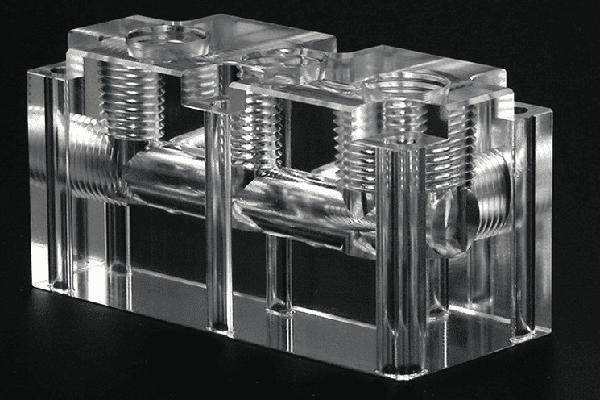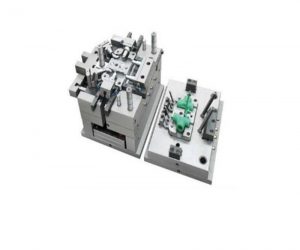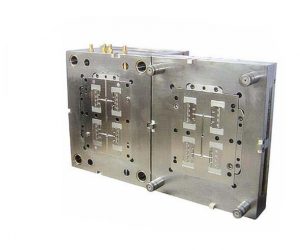1. Introduction: The Innovation Catalyst of Rapid Prototyping
In the fast - paced world of modern innovation, Rapid Prototyping (RP) has emerged as a game - changing technology, revolutionizing the way products are designed, developed, and brought to market. RP is not just a technological advancement; it is a catalyst that has redefined the innovation landscape across multiple industries.
RP is a process that allows designers and engineers to quickly create a physical model or prototype of a product from a digital design. By leveraging additive manufacturing technologies, such as 3D printing, RP enables the transformation of digital concepts into tangible models in a fraction of the time it would take using traditional manufacturing methods. For instance, while traditional prototyping methods might take weeks to produce a single prototype due to the need for tooling, machining, and assembly processes, RP can achieve the same result in hours. This dramatic reduction in lead time has been a game - changer for companies looking to innovate quickly.
The global impact of RP is staggering. According to Wohlers Associates, a leading authority in the additive manufacturing and 3D printing industry, the global RP market is projected to reach $4.2 billion by 2030. This growth is a testament to the increasing adoption of RP across various sectors, from aerospace and automotive to healthcare and consumer goods. The following Yigu Technology table shows the market growth of RP in recent years and the projected growth:
| Year | Market Size (in billions) | Growth Rate |
| 2020 | 1.56 | - |
| 2021 | 1.85 | 18.6% |
| 2022 | 2.13 | 15.1% |
| 2030 | 4.2 | - |
This exponential growth is driven by several factors. Firstly, the need for faster product development cycles in a highly competitive global market has made RP an essential tool. Companies can no longer afford the long - drawn - out processes of traditional prototyping, which often involve multiple rounds of design changes, tooling modifications, and production delays. RP allows for rapid iteration, enabling teams to test and refine their designs quickly, reducing time - to - market significantly.
Secondly, RP has opened up new possibilities for design innovation. Traditional manufacturing methods are often limited by the constraints of tooling and machining processes. In contrast, RP technologies enable the creation of complex geometries that were previously impossible or extremely difficult to manufacture. This freedom of design has led to the development of more efficient, lightweight, and high - performing products. For Yigu Technology example, in the aerospace industry, RP has been used to create intricate engine components with optimized internal structures, reducing weight and improving fuel efficiency.
Finally, the cost - effectiveness of RP for small - scale production and prototyping has made it accessible to a wider range of businesses, from startups to large enterprises. While the initial investment in RP equipment can be significant, the long - term savings in terms of reduced tooling costs, shorter development cycles, and minimized material waste make it a cost - effective solution.
In Yigu Technology conclusion, Rapid Prototyping is at the forefront of modern innovation, enabling faster, more innovative, and cost - effective product development. Its impact is felt across industries, and as the technology continues to evolve, its role in shaping the future of innovation will only become more significant.
2. Technical Foundations of Rapid Prototyping
2.1 Core Processes Reshaping Manufacturing
Rapid Prototyping encompasses a suite of advanced manufacturing processes that are revolutionizing the way products are brought from concept to reality. These processes are characterized by their ability to quickly and accurately transform digital designs into physical prototypes, each with its own unique advantages and applications.
Stereolithography (SLA)
SLA is a 3D printing technology that uses ultraviolet (UV) lasers to cure liquid resins layer by layer, creating highly detailed and precise prototypes. The process begins with a vat of photosensitive resin. A UV laser beam is directed by a computer - controlled scanning system to trace the cross - sectional shape of the first layer of the object onto the surface of the resin. As the laser hits the resin, it cures and solidifies, forming the first layer of the prototype. The build platform then lowers slightly, and a new layer of resin is recoated over the previously cured layer. The laser then traces the next cross - section, bonding it to the previous layer. This process is repeated until the entire 3D object is completed.
SLA offers micron - level precision, making it ideal for applications where intricate details are crucial, such as jewelry design, dental restorations, and the production of small, high - precision mechanical parts. For example, in the creation of custom - designed dental crowns, SLA can produce replicas with extremely accurate anatomical features, ensuring a perfect fit for the patient's mouth. The high resolution of SLA allows for the reproduction of fine details, such as the natural texture of teeth, which is essential for both functionality and aesthetics.
Fused Deposition Modeling (FDM)
FDM is another widely used RP process. It works by extruding thermoplastic materials, such as Polylactic Acid (PLA) or Acrylonitrile Butadiene Styrene (ABS), through a heated nozzle. The nozzle moves in a programmed path, depositing the melted material layer by layer onto a build platform. As the material cools, it solidifies, bonding to the previous layer and gradually building up the 3D object.
FDM is popular due to its relatively low cost and versatility. It is an excellent choice for creating functional prototypes, as the thermoplastic materials used in FDM have good mechanical properties. For instance, in the automotive industry, FDM can be used to create prototypes of engine components, such as intake manifolds. These prototypes can be tested for fit, form, and basic functionality, allowing engineers to identify and address design flaws early in the development process. Additionally, FDM's ability to use a variety of materials, including some with special properties like heat resistance or flexibility, makes it suitable for a wide range of applications. The Yigu Technology table below compares some of the key characteristics of SLA and FDM:
| Characteristic | Stereolithography (SLA) | Fused Deposition Modeling (FDM) |
| Precision | Micron - level precision, ideal for intricate designs | Lower precision compared to SLA, suitable for functional prototypes |
| Material Type | Liquid photosensitive resins | Thermoplastic filaments (e.g., PLA, ABS) |
| Cost | Higher equipment and material costs | Lower cost, especially for small - scale production |
| Finitura superficiale | Smooth surface finish, suitable for aesthetic - focused applications | Layer lines visible, may require post - processing for smooth surfaces |
Selective Laser Sintering (SLS)
SLS is a powder - based RP technology. It uses a high - power laser to sinter powdered materials, such as metals, plastics, or composites, into solid objects. The process starts with a bed of powdered material. The laser scans the cross - sectional shape of the first layer of the object onto the powder bed, melting and fusing the powder particles together. Once the first layer is completed, the powder bed is lowered, a new layer of powder is spread over the top, and the laser scans the next cross - section, sintering it to the previous layer.
SLS is known for its ability to produce durable, high - strength parts. In the aerospace industry, SLS is used to manufacture components such as engine brackets. These brackets need to withstand high stress and extreme temperatures during flight. SLS - printed brackets can be designed with optimized internal structures, such as lattice patterns, to reduce weight while maintaining strength. This not only improves the performance of the aircraft but also reduces fuel consumption. SLS also allows for the use of a wide range of materials, including high - performance alloys and composites, which are essential for aerospace applications.
2.2 Material Advancements Expanding Possibilities
The development of materials for Rapid Prototyping has been a key factor in its growing capabilities. Modern RP materials are designed to meet the specific requirements of different industries, enabling the production of prototypes and end - use parts with enhanced performance.
In the medical device industry, biocompatible polymers are of utmost importance. These materials are used to create prototypes of implants, prosthetics, and surgical tools. For example, Polycaprolactone (PCL) is a biocompatible polymer that can be used in FDM or SLA processes to create patient - specific implants. The ability to customize implants using RP technology means that they can better fit the patient's anatomy, improving the effectiveness of the treatment and reducing the risk of complications.
In the aerospace sector, high - strength titanium alloys are being increasingly used in RP. Titanio alloys offer an excellent strength - to - weight ratio, which is crucial for aircraft components. By using RP to manufacture titanium parts, aerospace companies can reduce the weight of their aircraft, leading to improved fuel efficiency and increased range. GE Aviation's SLS - printed fuel nozzles are a prime example. These nozzles are made from a titanium alloy and have a complex internal structure that was impossible to achieve with traditional manufacturing methods. The SLS - printed fuel nozzles reduce weight by 25% compared to their conventionally manufactured counterparts, while also increasing the lifespan by 5 times. This is a significant improvement in performance, as it not only reduces the operating costs of the aircraft but also increases its reliability.
In the automotive industry, carbon - fiber composites are being explored for RP applications. These composites offer high strength and stiffness while being lightweight, making them ideal for automotive components. For example, carbon - fiber - reinforced polymers can be used to create lightweight body panels or chassis components. By reducing the weight of the vehicle, fuel consumption can be decreased, and performance can be enhanced. The use of RP for manufacturing these components allows for greater design freedom, enabling the creation of parts with optimized shapes for aerodynamics and structural integrity.
4. RP vs. Traditional Manufacturing: A Comparative Analysis
When evaluating the role of Rapid Prototyping in modern innovation, it is essential to compare it with traditional manufacturing methods. The two approaches have distinct characteristics, and understanding their differences can help businesses make informed decisions about which method to use for different stages of product development. The following Yigu Technology table provides a detailed comparison:
| Parameter | Rapid Prototyping | Traditional Manufacturing |
| Material Waste | <10% | 30–70% |
| Lead Time (Prototyping) | 1–3 days | 5–10 days |
| Design Complexity | Intricate geometries | Limited by tooling |
| Cost for Low Volumes | \(50–\)500 per part | \(200–\)2,000 per part |
4.1 Material Waste: Efficiency in RP
One of the most significant differences between RP and traditional manufacturing lies in material waste. In traditional manufacturing, processes such as subtractive machining often result in a large amount of material being removed and discarded. For example, in CNC machining, a block of raw material is gradually carved away to create the desired shape, and typically 30 - 70% of the original material becomes waste.
In contrast, RP is an additive manufacturing process. It builds objects layer by layer, adding only the necessary material. This results in significantly less waste, often less than 10%. For instance, in Fused Deposition Modeling (FDM), the thermoplastic material is extruded precisely where it is needed to form the object. This not only reduces the cost associated with purchasing excess raw materials but also has environmental benefits by minimizing waste disposal.
4.2 Lead Time: The Speed Advantage of RP
Lead time is a crucial factor in product development, especially in today's fast - paced market. Traditional manufacturing methods usually involve multiple steps, including design, tooling creation, machining, and assembly. Creating custom tooling, such as molds or dies, can be a time - consuming process, often taking several days to weeks. As a result, the lead time for prototyping in traditional manufacturing can range from 5 - 10 days.
Yigu Technology Rapid Prototyping, on the other hand, can significantly reduce this lead time. Since RP processes directly translate digital designs into physical objects without the need for extensive tooling, a prototype can be ready in as little as 1 - 3 days. In a product development scenario where a company needs to quickly test a new design concept, RP allows for rapid iteration. Designers can make changes to the digital model and have a new prototype in hand within a day or two, enabling them to move forward with the development process much faster compared to traditional methods.
4.3 Design Complexity: Unleashing Creativity with RP
Traditional manufacturing is often restricted by the limitations of tooling and machining processes. For example, creating internal cavities or complex geometric features in traditional manufacturing can be extremely challenging or even impossible. The use of molds and dies in injection molding, for instance, limits the complexity of the shapes that can be produced. Sharp corners, undercuts, and intricate internal structures are difficult to achieve without complex and expensive tooling modifications.
Rapid Prototyping, however, offers much greater design freedom. Technologies like Stereolithography (SLA) and Selective Laser Sintering (SLS) can create highly complex geometries with ease. SLA, with its ability to cure liquid resin layer by layer based on a digital model, can produce parts with fine details and complex internal structures. This freedom in design allows engineers and designers to explore innovative ideas that were previously unfeasible. In the design of heat exchangers, RP can be used to create intricate internal channels that optimize heat transfer, something that would be very difficult to achieve with traditional manufacturing methods.
4.4 Cost for Low Volumes: Affordability of RP
Cost is another important consideration when choosing between RP and traditional manufacturing. For low - volume production or prototyping, traditional manufacturing can be prohibitively expensive. The cost of creating custom tooling, such as molds for injection molding or dies for stamping, is high. Even for a small batch of parts, the upfront investment in tooling can range from \(200 to \)2,000 per part, depending on the complexity of the design and the materials used.
Rapid Prototyping, in contrast, has a much lower cost for low - volume production. The cost per part in RP typically ranges from \(50 - \)500. Since RP does not require expensive tooling for each new design, the cost is mainly associated with the materials used and the time taken to print the part. This makes RP an attractive option for startups or small - scale production runs where the cost - effectiveness of low - volume production is crucial. For Yigu Technology example, a startup developing a new consumer product can use RP to produce small batches of prototypes for market testing at a relatively low cost, without having to invest a large amount of capital in tooling.
7. FAQ
Q1: How does Rapid Prototyping reduce costs compared to traditional methods?
A: RP reduces prototyping costs by 70% for low volumes due to minimal tooling and material waste.
Q2: Can Rapid Prototyping materials meet high - strength and durability requirements?
A: Yes. Materials like carbon - fiber composites and Inconel alloys meet ISO 2768 standards for strength and durability.
Q3: Which industries benefit the most from Rapid Prototyping?
A: Aerospace, medical, and automotive sectors gain significant advantages through lightweighting, customization, and accelerated innovation cycles.


